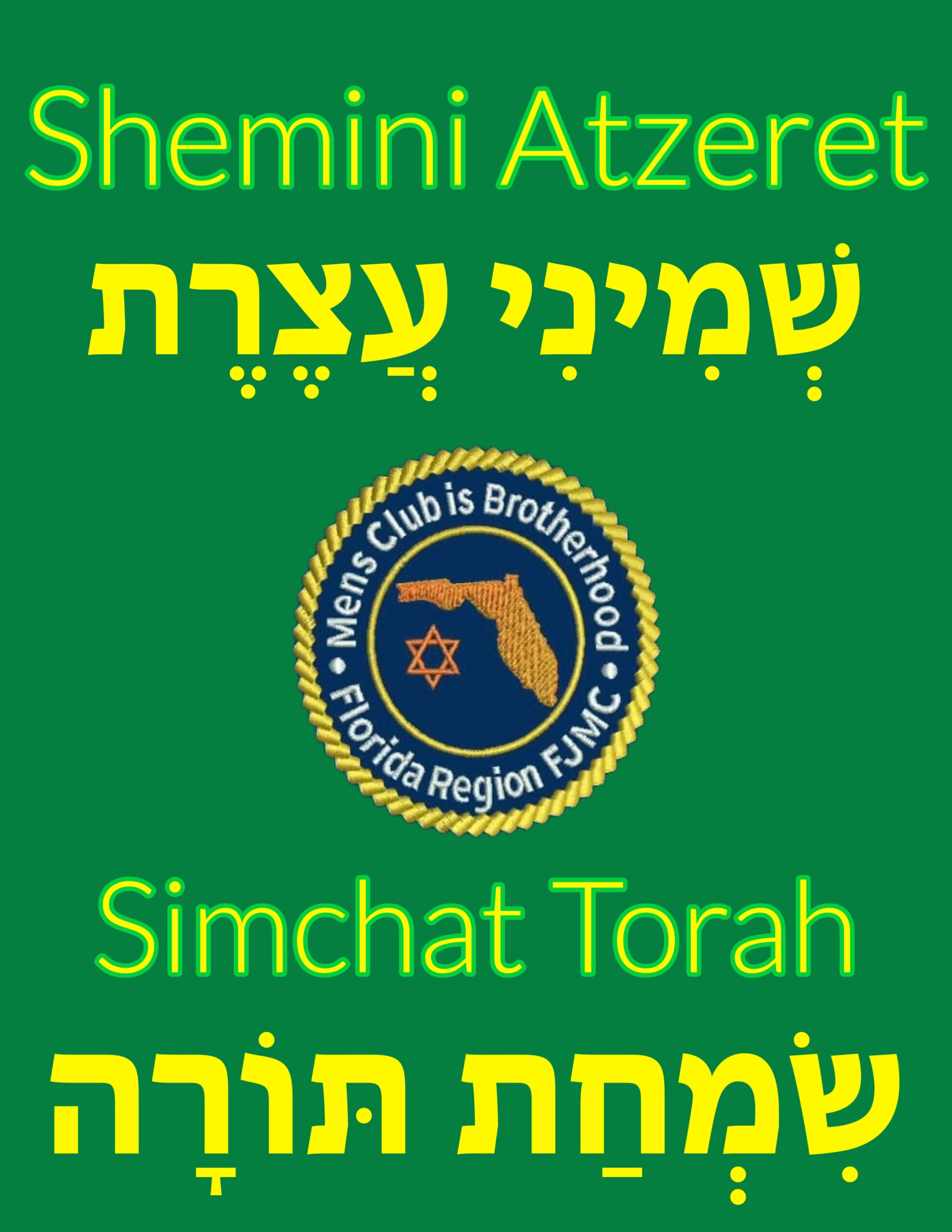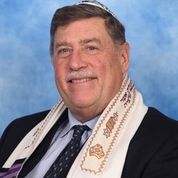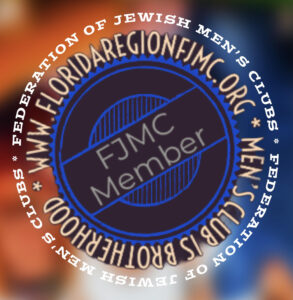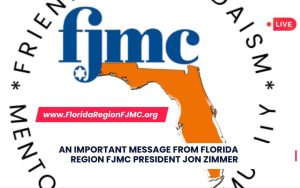
When you Choose Shabbat, you choose to learn that every Shabbat is different and this Shabbat is special indeed because it marks the conclusion of Sukkot and ushers in the holidays of Shemini Atzeret, a day of solemn assembly followed by Simchat Torah, a day of celebration and joy .
Shemini Atzeret (שְׁמִינִי עֲצֶרֶת), the “Eighth [day of] Assembly”, directly follows the festival of Sukkot which is celebrated for seven days, so is Shemini Atzeret considered the eighth day of Sukkot? The answer is both yes and no. According to Wikipedia, Shemini Atzeret is a separate yet connected holiday devoted to the spiritual aspects of the festival of Sukkot. Part of its duality is that it is simultaneously considered to be both connected to Sukkot and a separate festival in its own right.
Sukkot is characterized by the use of the sukkah (booth or tabernacle) and the “Four Species”, a lulav (palm branch), hadas (myrtle), arava (willow) and etrog (citron) however the Torah specifies use of those objects for seven days only, not eight. The Talmud (Tractate Sukkah 48a) describes Shemini Atzeret with the words “a holiday in its own right” and lists six ways that Shemini Atzeret differs from Sukkot; four related principally to the Temple service and two others remain relevant to modern celebration of the holiday. First, the blessing “Shehecheyanu” is recited on the night of Shemini Atzeret, just as it is on the first night of all other major Jewish holidays. Second, the holiday is referred to distinctively as “Shemini Atzeret” and not as “Sukkot” in the prayer service. However, immediately below that discussion, the Talmud describes Shemini Atzeret as the “end holiday of the festival [of Sukkot]”. The context here is that the Sukkot obligations of joy and recitation of Hallel (Psalms 113–118) last eight days. This is also why one of Sukkot’s liturgical aliases, “Time of Our Happiness” continues to be used to describe Shemini Atzeret (and by extension Simchat Torah) in prayers. Shemini Atzeret is therefore simultaneously “a holiday in its own right” and the the end holiday of Sukkot.
The day after Shemini Azeret is Simchat Torah or Simhat Torah (שִׂמְחַת תּוֹרָה), literally “Rejoicing with / of the Torah”, a joyful celebration of the conclusion of the annual cycle of public Torah readings and the beginning of a new cycle.
Rabbi Michael D Klein of Temple Torat Emet offers his insights on Shemini Atzeret and Simchat Torah:
Our sages teach us that before Hashem created our universe, there were previous universes that were created and destroyed. The forces that were set in motion to create our universe were set in motion long before our universe and our world existed and are still at work. Physicists are still grappling with a thorough understanding of how these forces came into being and exactly how they interacted to form matter and energy. This is where science and belief intersect! Many of the greatest theoretical physicists accept that no force that exists in the universe could have created such order ex nihilo (out of nothing).
The description that the Torah gives us early in Genesis is repeated three times, perhaps to emphasize, that even the greatest of our sages who took the history and legend of the early Torah also grappled with the understanding of how the world came into being and our place within it. It is fitting, therefore, that on Simchat Torah we symbolically end the fifth Book of the Torah and begin the Torah again.
Shemini Atzeret is a time when the Kings of Israel gathered the people one last time after the Holidays and sent everyone home with blessings. We remember our ancestors by reciting Yizkor once again and then we rejoice in the renewal of Torah which gives us the opportunity to study its lessons each year from a different perspective. May we always find reasons to rejoice in the renewal of creation and in celebrating the Chagim with renewal of spirit and enthusiasm to face the challenges ahead in a new year.
Questions to Ponder:
- Why do we, by tradition, not continue to the other books of the Tanach after we finish reading Zot Habracha?
- Why does the Torah emphasize that Moses’ burial location is unknown to this day?
- How is man pictured differently in the three narratives of creation with Bereshit?
- How is the creation of woman depicted differently with the narratives of creation?”
Rabbi Michael D. Klein attended Yeshiva College of South Florida and served as Torah Reader, Hebrew teacher, Chazzan and spiritual leader of various synagogues throughout South Florida. In January 2015 he became Ritual Director, Bnai/Bnot Mitzvah instructor and 7th grade Hebrew instructor for Temple Torat Emet of Boynton Beach. In October 2019 he was accepted into an accelerated track at Yeshiva/Mesifta Adas Wolkowisk, completed his Rabbinical studies in July 2020 and has been the Rabbinic leadership of Temple Torat Emet since August 2020. In September of 2022 he was appointed Rabbinic and Spiritual Advisor of the Florida Region of FJMC.
Choose Shabbat; choose to celebrate, to light candles, sing songs and learn a little Torah.
This moment of Jewish Learning is brought to you by the Florida Region of the Federation of Jewish Men’s Clubs (FJMC). We are part of a confederation of over 200 Jewish Men’s Clubs and Brotherhoods representing over 20,000 members across the United States, Canada, Latin America, and beyond. Learn more about how your Jewish Men’s Club or Brotherhood can affiliate with the FJMC at: https://www.fjmc.org/content/affiliating-fjmc.
The Florida Region of FJMC serves the needs of affiliated Men’s Clubs and Brotherhoods throughout the State of Florida. Get to know more about the FJMC Florida Region and our growing network of Jewish Men’s Clubs and Brotherhoods at www.floridaregionfjmc.org and please visit and LIKE our Florida Region FJMC Facebook Group at www.facebook.com/FloridaRegionFJMC.








